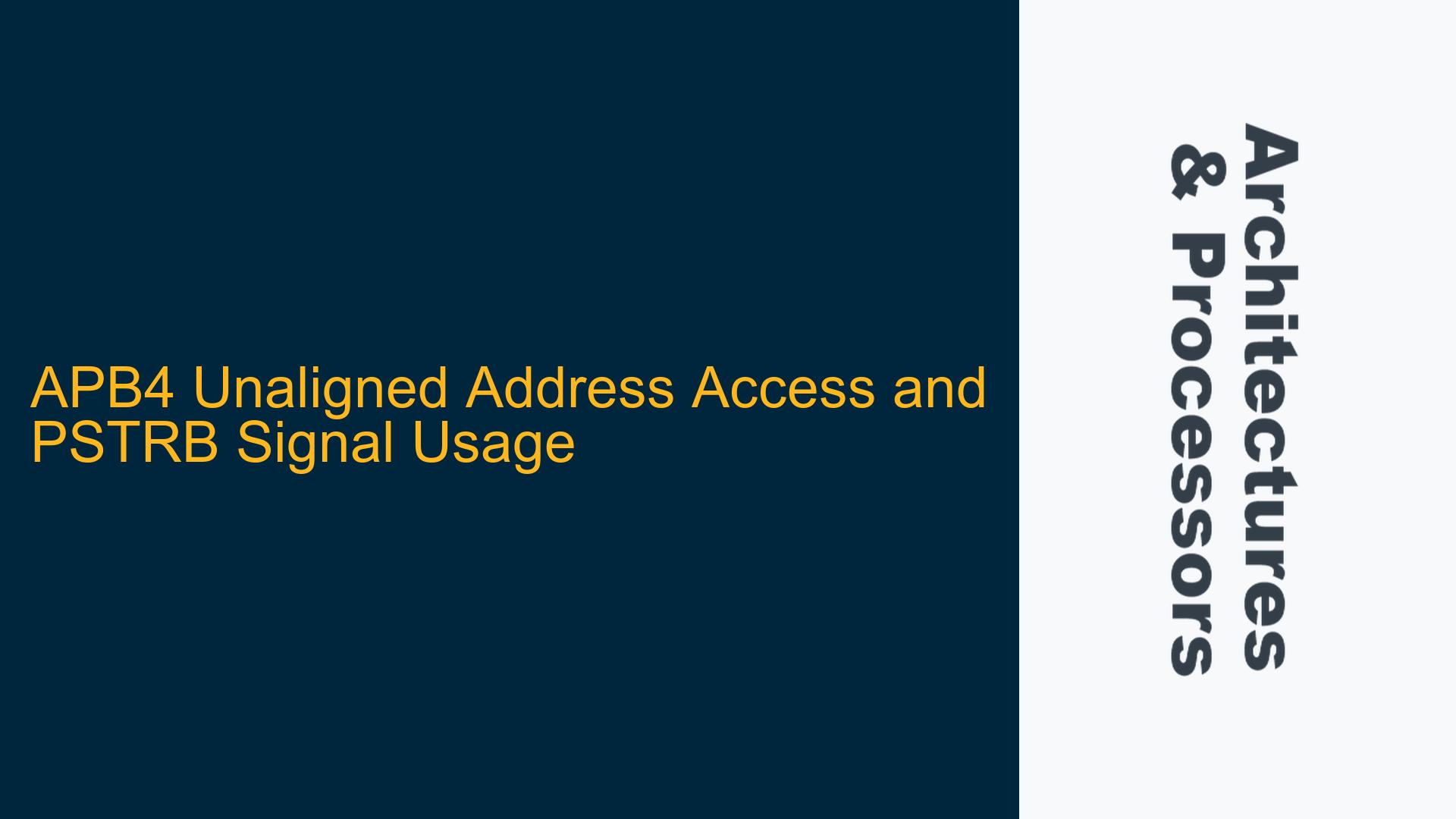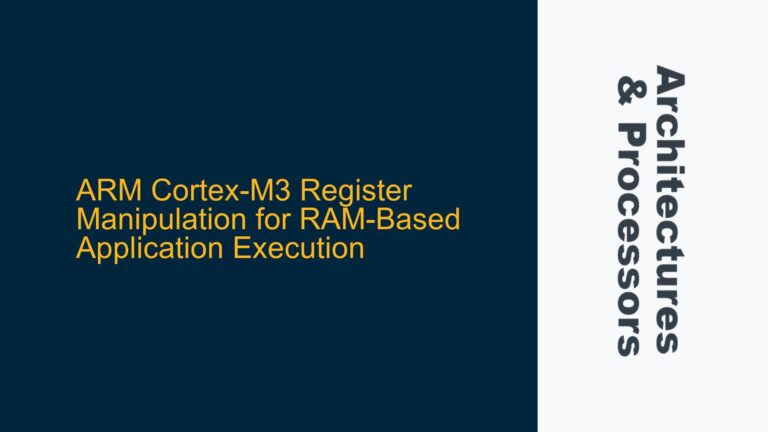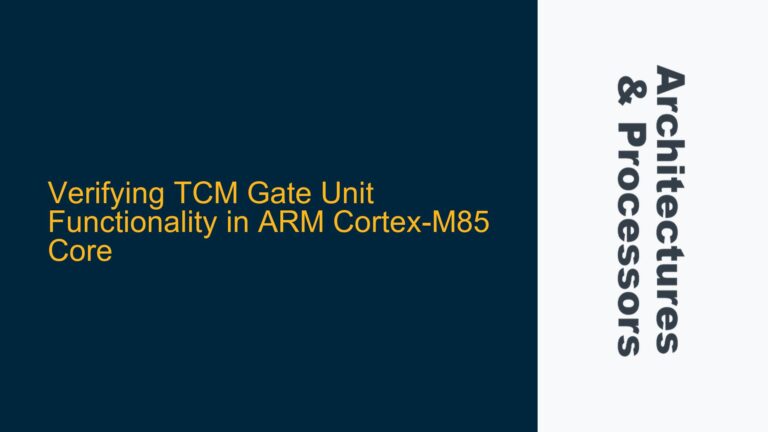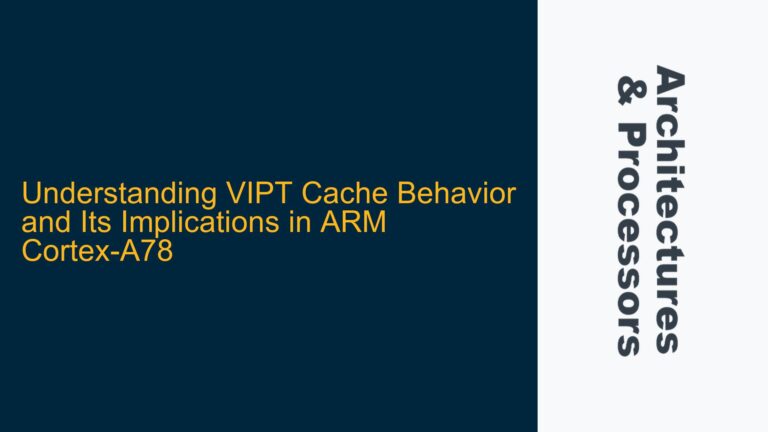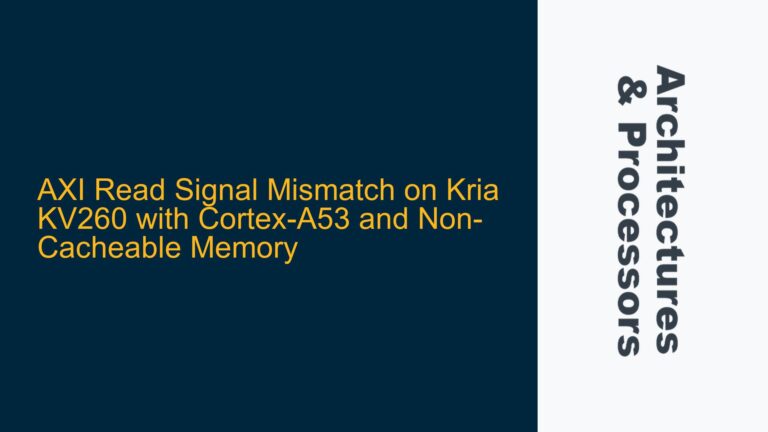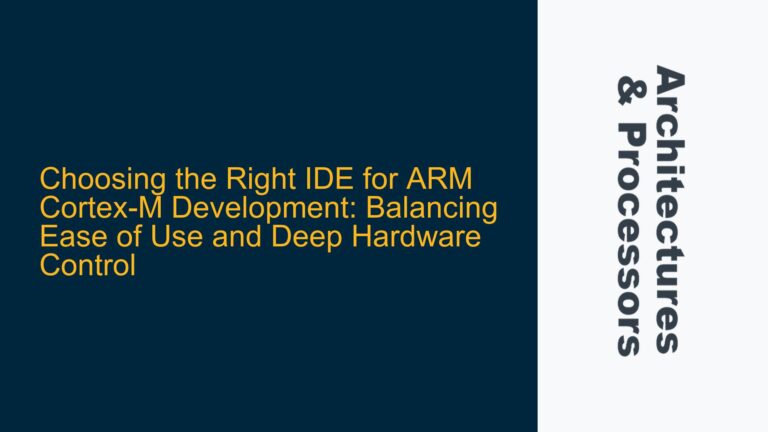APB4 Protocol Constraints on Unaligned Address Access
The Advanced Peripheral Bus (APB) protocol, particularly in its fourth iteration (APB4), is designed for low-power, low-complexity peripheral interfaces. Unlike its more sophisticated counterparts like AXI or AHB, APB4 does not inherently support unaligned address access. This limitation stems from the protocol’s design philosophy, which prioritizes simplicity and efficiency over the flexibility of handling unaligned transfers.
In APB4, the address signal (PADDR) must always be aligned to the width of the data bus. For instance, in a 32-bit data bus implementation, PADDR increments in steps of 4 bytes (0x0, 0x4, 0x8, etc.). This alignment requirement ensures that each transfer utilizes the full width of the data bus, simplifying the design of both the master and slave interfaces. The alignment constraint is particularly critical when bridging from other AMBA protocols like AXI or AHB, where unaligned transfers are supported. In such cases, the lower bits of PADDR are typically tied low to prevent unaligned accesses from propagating to the APB4 interface.
The APB4 protocol does introduce the PSTRB signal, which allows for byte-level write operations. However, this signal is not a mechanism for supporting unaligned address access. Instead, PSTRB is used to indicate which byte lanes of the data bus contain valid write data. This feature can be leveraged to perform partial writes without requiring a full read-modify-write sequence, but it does not circumvent the alignment requirement for PADDR.
Misinterpretation of APB4 Features and Documentation
A common source of confusion arises from the misinterpretation of APB4 features, particularly regarding unaligned address access. Some third-party documentation or vendor-specific implementations may claim support for unaligned address access, but this is not a feature of the APB4 protocol as defined by ARM. For example, a reference to unaligned address access in a third-party document might be describing a custom extension or a specific implementation detail that deviates from the standard APB4 specification.
The APB4 protocol specification clearly outlines the alignment requirements for PADDR and the role of the PSTRB signal. Any claims of unaligned address access support should be carefully scrutinized against the official ARM documentation. In cases where such features are described, it is essential to verify whether they are part of the standard protocol or a vendor-specific enhancement. This verification process often involves consulting the official ARM Technical Reference Manual (TRM) for APB4 and cross-referencing with the vendor’s documentation.
The confusion is further compounded by the terminology used in different contexts. For instance, the term "unaligned address access" might be used interchangeably with "unaligned transfers," even though they refer to distinct concepts. Unaligned transfers involve data that spans multiple aligned address boundaries, whereas unaligned address access refers to the starting address of a transfer not being aligned to the data bus width. In APB4, neither concept is supported natively, and any implementation claiming otherwise must be carefully evaluated.
Implementing Byte-Level Write Operations Using PSTRB
While APB4 does not support unaligned address access, the PSTRB signal provides a mechanism for performing byte-level write operations. This feature is particularly useful in scenarios where only a subset of the bytes in a register need to be updated, as it eliminates the need for a read-modify-write sequence. The PSTRB signal is a bitmask that indicates which byte lanes of the data bus contain valid write data. For example, in a 32-bit data bus, PSTRB is a 4-bit signal where each bit corresponds to a byte lane.
The PSTRB signal can be used to implement various byte-level write patterns, such as updating only the lower two bytes of a register (PSTRB = "0011") or updating non-contiguous bytes (PSTRB = "0101"). These patterns allow for efficient data manipulation without requiring the entire register to be read and rewritten. However, it is important to note that the PSTRB signal does not enable unaligned address access. The starting address (PADDR) must still be aligned to the data bus width, and the PSTRB signal only affects the byte lanes within that aligned transfer.
When designing an APB4 interface, it is crucial to ensure that the PSTRB signal is used correctly and that the alignment requirements for PADDR are strictly adhered to. Failure to do so can result in undefined behavior or data corruption. Additionally, the use of PSTRB should be documented clearly in the design specifications to avoid confusion during implementation and verification.
Verification Strategies for APB4 Interfaces
Verifying an APB4 interface requires a thorough understanding of the protocol’s constraints and features. The verification process should include checks for alignment requirements, proper usage of the PSTRB signal, and correct handling of byte-level write operations. A comprehensive test plan should be developed to cover all possible scenarios, including edge cases and error conditions.
One effective verification strategy is to use a combination of directed tests and constrained random testing. Directed tests can be used to verify specific scenarios, such as aligned transfers and byte-level write operations using PSTRB. Constrained random testing, on the other hand, can be used to explore a wider range of scenarios, including invalid or unexpected inputs. This approach helps to uncover potential issues that might not be apparent in directed tests.
Another important aspect of APB4 verification is the use of assertions and coverage metrics. Assertions can be used to enforce protocol rules, such as the alignment requirement for PADDR and the correct usage of PSTRB. Coverage metrics, such as functional coverage and code coverage, can be used to ensure that all aspects of the design have been thoroughly tested. These metrics provide valuable feedback on the effectiveness of the verification process and help to identify areas that require additional testing.
In addition to simulation-based verification, formal verification techniques can be employed to prove the correctness of the APB4 interface. Formal verification uses mathematical methods to exhaustively analyze the design and verify that it adheres to the protocol specification. This approach is particularly useful for identifying corner cases and ensuring that the design behaves correctly under all possible conditions.
Addressing Common Pitfalls in APB4 Design and Verification
Designing and verifying an APB4 interface can be challenging, particularly when dealing with alignment requirements and byte-level write operations. One common pitfall is the incorrect interpretation of the PSTRB signal, leading to improper handling of byte-level writes. This can result in data corruption or unexpected behavior, particularly in systems where multiple masters or slaves are connected to the APB4 bus.
Another common issue is the failure to properly bridge between APB4 and other AMBA protocols, such as AXI or AHB. When bridging from a protocol that supports unaligned transfers, it is essential to ensure that the lower bits of PADDR are tied low to prevent unaligned accesses from propagating to the APB4 interface. Failure to do so can result in protocol violations and undefined behavior.
To avoid these pitfalls, it is important to follow best practices in APB4 design and verification. This includes adhering to the alignment requirements for PADDR, correctly using the PSTRB signal for byte-level writes, and thoroughly verifying the interface using a combination of directed tests, constrained random testing, assertions, and formal verification. Additionally, clear and comprehensive documentation is essential to ensure that all team members understand the design constraints and verification requirements.
Conclusion
The APB4 protocol is a powerful tool for interfacing with low-power, low-complexity peripherals, but it comes with specific constraints that must be carefully managed. Understanding the alignment requirements for PADDR and the proper usage of the PSTRB signal is essential for designing and verifying a robust APB4 interface. By following best practices and employing a comprehensive verification strategy, designers can ensure that their APB4 interfaces are both efficient and reliable.
In summary, while APB4 does not support unaligned address access, the PSTRB signal provides a mechanism for performing byte-level write operations. Careful attention to protocol constraints, thorough verification, and clear documentation are key to successfully implementing and verifying APB4 interfaces. By addressing common pitfalls and adhering to best practices, designers can leverage the strengths of the APB4 protocol to create efficient and reliable peripheral interfaces.
